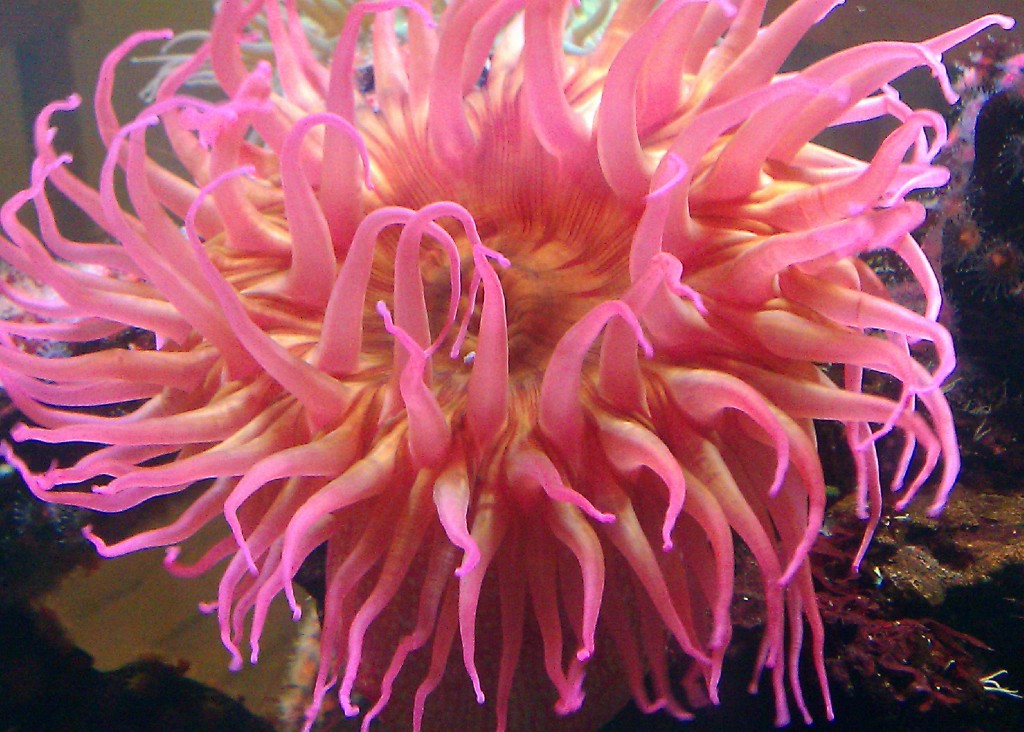
Sand-rose anemone
For some brilliant color, ocean sparkle and pop, look no further than the sand-rose sea anemone or Urticina columbiana. This beauty lights up the sandy ocean floor in depths of 40 to 150 feet and lives as far north as British Columbia to as far south as Baja California. The diameter of a sand-rose anemone’s crown of tentacles can reach up to 14 inches.
Sea anemones belong to the Phylum Cnidaria, which also includes sea jellies (jellyfish), corals and hydroids. There’s really not much to cnidarians, as Daniel Gotshall explains in his book, Guide to Marine Invertebrates Alaska to Baja California, “The basic anatomy of a typical cnidarian consists of a body containing the gut and a mouth usually surrounded by tentacles.”
While sea jellies float with the ocean’s currents feeding on animals that wander too close to their tentacles, sea anemones stake out a place on the ocean floor and patiently wait for unsuspecting fish and other critters to come to them. When a fish touches a sea anemone’s tentacles, blam! The tentacles are packed with stinging cells called nematocysts and the fish becomes instant dinner. Then the tentacles work together to bring the fish towards the mouth, which leads directly to the stomach. And that pretty much sums up the lifestyle of a sea anemone.
The sting of a sea anemone is not as powerful and dangerous as the sting of a sea jelly. Sea anemones are often on display in touch tanks at aquariums and if you touch one you’ll feel only the slightest sting and wonder if you felt anything at all. That said, if you happen upon a sea anemone in the wild, just look, don’t touch. You don’t want to unintentionally harm the sea anemone by touching it. Just enjoy the dazzling array of colors and a sand-rose anemone’s natural beauty, a version of ocean fireworks on the sea floor.
Have a fun and safe 4th of July everyone!
(Note: There are more than 1,000 species of sea anemones living throughout the world’s oceans. I’m not familiar with the stinging capabilities of all species. In general play it safe and don’t touch.)
This Sea Anemone is drop dead gorgeous but like Carolyn said, look but don’t touch. Or in my case, photograph but don’t touch. Love your posts.
We are doing a report, but I don’t know anything about sea roses.
Hi Adienne, Best wishes on doing your report! This post is actually about a type of sea anemone that happens to be called a sand-rose sea anemone. I’m not familiar with sea roses.